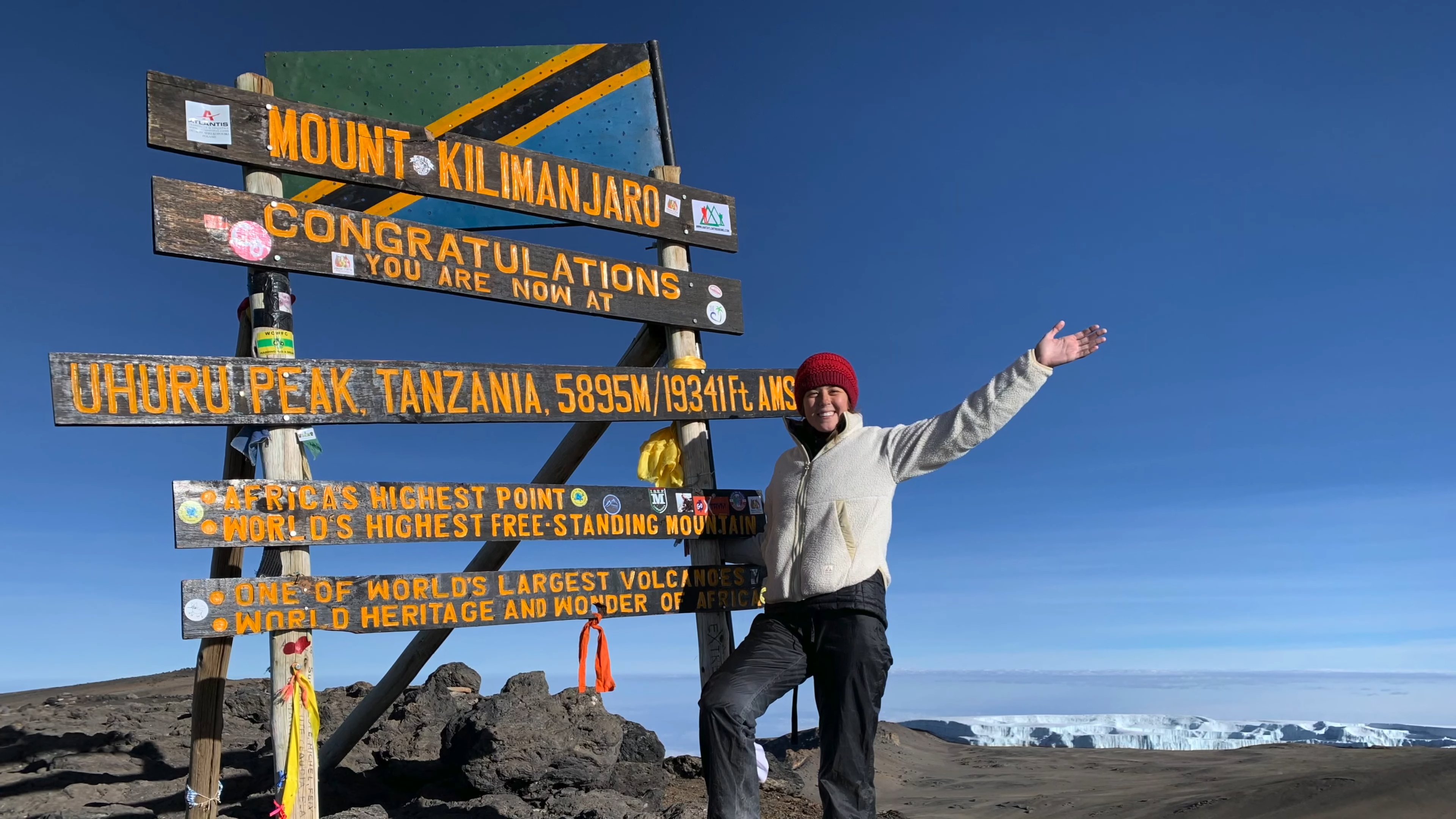Uhuru Peak: Complete Guide to Summiting on Mount Kilimanjaro
Hiking Mount Kilimanjaro is an epic journey to Uhuru Peak, the highest point on the African continent, towering at 19,340 feet (5,850 meters). This climb is not for the faint-hearted, as we indicate in our hiking guide to the top of Africa. The Western Breach route, known for its steep terrain and landslides, leads us directly into the volcanic crater, through the rugged landscape, and finally to the iconic Uhuru Peak.
Rising majestically above the African plains, Mount Kilimanjaro is a dormant volcano, last showing signs of eruption in the early 20th century. Its iconic snowcapped summit remains a beacon for adventurers worldwide. Kilimanjaro is composed of three distinct volcanic cones: Kibo (5,895 meters), Mawenzi (5,149 meters), and Shira (3,962 meters).
Situated in Tanzania, near the Kenyan border and just south of the equator, Mount Kilimanjaro is a geological marvel. It marks the end of the 4,000-mile-long Great Rift Valley, a significant fault line that’s slowly tearing apart East Africa. The region is filled with natural wonders like towering bluffs, crystal-clear lakes, and active volcanoes, making it a top destination for adventurers and nature lovers.
First summited by German climber Hans Meyer in 1889, Uhuru Peak has become a world-famous high-altitude trekking destination. However, only about 65% of trekkers make it to the summit due to the extreme conditions. To maximize your chances of reaching Uhuru Peak, remember to take it slow. In Swahili, they say “Pole pole”—which means “slowly, slowly”—the key to success in such high-altitude environments. As the locals also say, “Mungu akipenda tuta fika”, meaning “If God wills it, we will arrive.”
The best times to climb Uhuru Peak align with Kilimanjaro’s dry seasons, which occur from January to March and June to October. While it’s possible to attempt the climb during the rainy season, be prepared for wet, cold, and challenging conditions. Fortunately, we’re trekking in July, and the weather is clear—perfect for a successful ascent to Uhuru Peak.
The name Kilimanjaro is still a topic of debate. Some believe it comes from the Swahili word Kilema, meaning “hill,” and Njaro, meaning “place of water.” Alternatively, the Chaga word Kilema Kyaro translates to “something difficult to conquer”—which is fitting for the journey to Uhuru Peak.
Our route, the Western Breach, is one of the most dangerous ways to reach Uhuru Peak. Sadly, there have been fatalities, including two American trekkers who lost their lives in 2015 due to falling rocks. The Western Breach was formed by a landslide, creating a steep, direct path to the summit. However, it requires extra caution. Begining the hike at 4:00 AM when the ground is still frozen and less prone to rockfalls, ensures a safer trek to Uhuru Peak.
The Kibo Cone, also known as Uhuru Peak, is the highest point on the African continent, towering at 5,895 meters. This is the ultimate goal for every climber, as reaching this summit offers unparalleled views and the pride of conquering Africa’s highest peak. At the summit, the sense of achievement is immense—only about 50% of climbers make it to the top, making that final photo a true symbol of victory. The panoramic views, snow-laden terrain, and sheer altitude offer a once-in-a-lifetime experience for all who reach the summit.
As you ascend Kilimanjaro, you’ll pass through five unique climate zones, each offering dramatic changes in terrain, flora, and fauna. From lush rainforest to alpine desert, the journey itself is as rewarding as the destination, providing an ever-evolving landscape to explore.
Although the last significant volcanic activity occurred around 150,000 years ago, Kilimanjaro remains closely monitored for any geological changes. The Kibo cone is still home to fumaroles, which emit gas within the crater—an intriguing reminder of the mountain’s volcanic past, though it remains a safe destination for climbers.
When planning your trek, Kilimanjaro offers several routes, each differing in difficulty, scenery, and crowd levels. The Marangu and Rongai routes are considered the easiest, providing a more straightforward path to the summit. For those seeking a more challenging experience, the Machame, Shira, and Lemosho routes offer steeper, more demanding trails and more dramatic landscapes.

